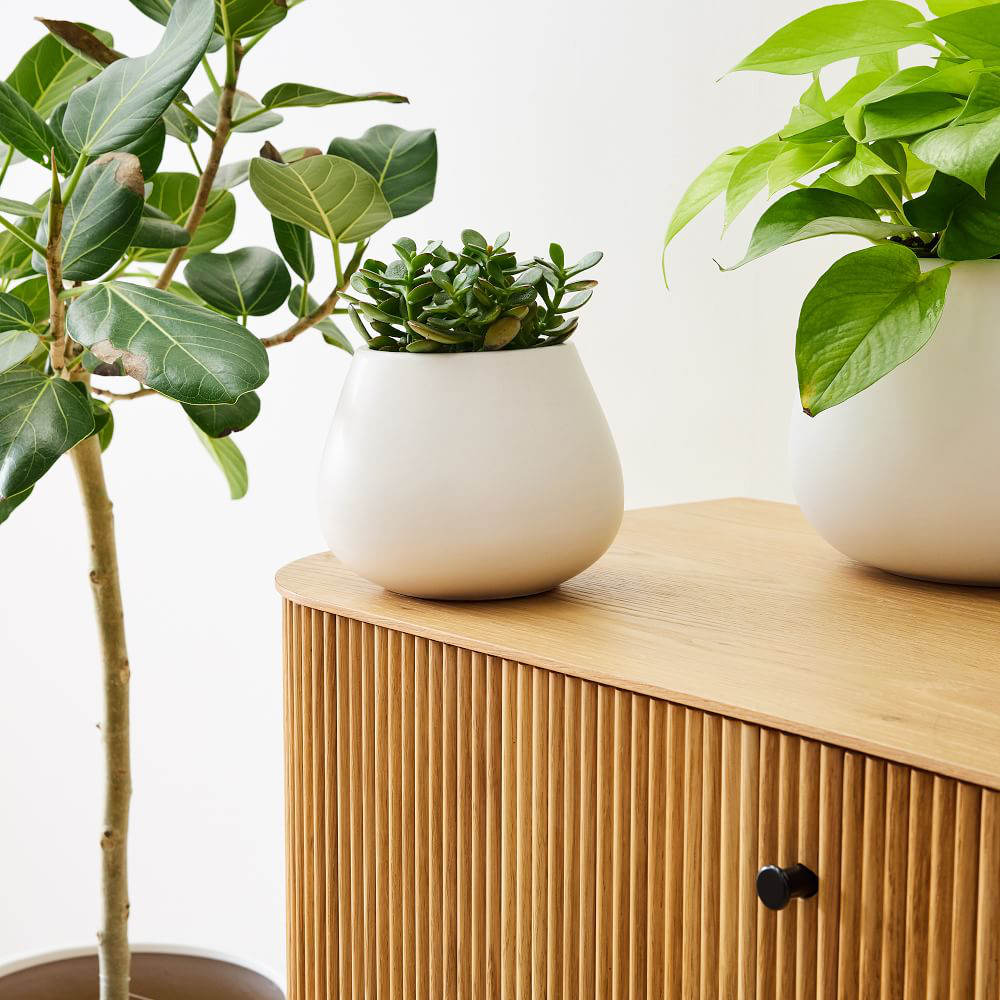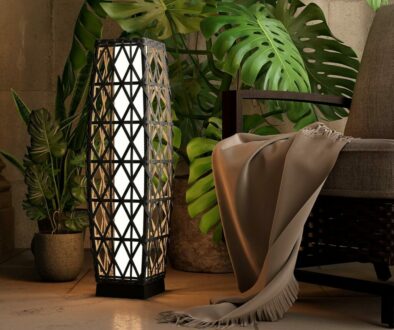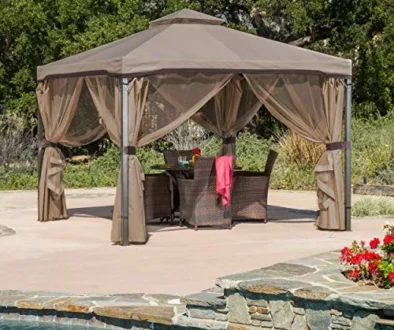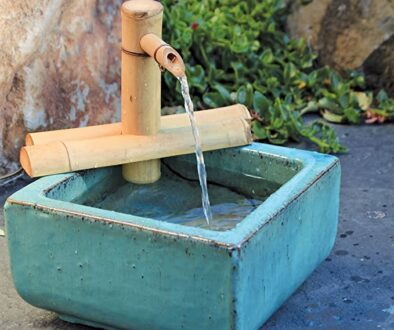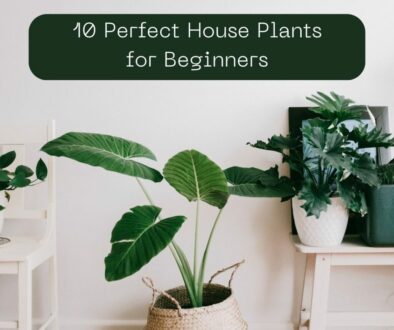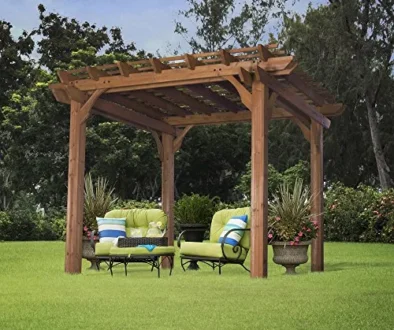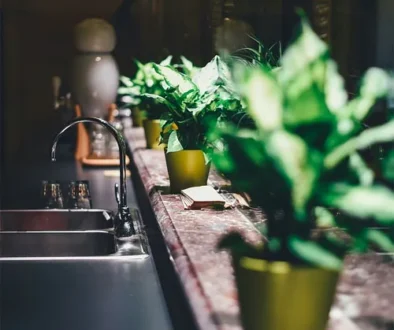How to Help your House Plants Thrive – A Complete Guide
House plants add a wonderful dimension to any living space. Their calming green hues, variety and variation in leaf structure, size and shape, even their subtle growth and movements bring a sense of peace and calm. And underlying that, the inherent ‘aliveness’ of thriving plants always seep in and spill over in to a space; when plants thrive we inevitably do too. But therein lies the challenge. What can we do to help our houseplants to thrive?
Those of us who have been blessed with green fingers and those who are natural plant enthusiasts know that it takes time and careful observation to know whether or not a plant is doing well. However, the rest of us who struggle with challenges of basics such as ‘Am i over watering?’ to philosophical ‘Is the plant happy here?’ could do with a easy-to-follow, clear-cut guide plant care.
There are a few hardy plants that will always find a way to do well regardless. Read our top recommendations for easy-going house plants. But how do we handle the majority of house plants that are just not that easy-going? Here in this post, we are going to break it down for you. All the essential components you need to keep and eye on to help your favourite house plant thrive. It’s really not that difficult, but it does take some time, observation and a willingness to try.

Know your indoor climate
Each of our homes have their own climate ranging from warm and humid to cool and dry. In the temperate climates especially, this depends on the usual thermostat setting in winter and how often you leave your windows open at other times of the year. Surprisingly our home’s micro-climate significantly affects how well house plants adapt in our homes.
If your home tends to veer towards the warmer side, then potted plants are more likely to dry out more quickly. Conversely, if you keep your house slightly cooler it may be worth keep plants that are cold-sensitive closer to heat sources.
Ultimately, to help your house plants thrive it is important to make sure that the temperature in your home is in a range that is right for your house plants.
Know your plant’s origins
While not always essential, knowing where your plant originates from often gives you a good idea of the climate in which it will thrive. The majority of house plants sold these days originate from tropical climates, This means that the plants are typically conditioned to thrive in warmer and humid climates.

While it is not necessary to replicate these exact conditions, it is helpful when thinking about how much and how often to water a plant. Similarly, succulents thrive in mediterranean type climates, with more porous sandy compost, slightly longer times between watering and often love full sun. Meanwhile, tropical plants prefer low light levels and high humidity. They are less fussy about compost type but definitely prefer warmth to chilly temperatures. In keeping your plant’s origins in mind it is helpful as a guide to meeting the essential requirements of a growing plant.
The Essential Requirements
In general, house plants have very simple requirements. Like all plants, they rely solely on sun for photosynthesis and water to help with that process. To that end, soil that is suitable to their needs also helps create an environment in which they thrive.
Sun
Not all plants have the same sunlight requirements. This is where knowledge of their origins really come in handy. Succulents for example generally love and require full sun while ferns and some tropical plants thrive in the shade. Providing plants with lighting suitable to their requirements ensures that they can grow optimally.

If you are unsure whether your house plant prefers bright light or shade, choose a space and then observe the plant over a couple of weeks. Plants that are generally shade-loving will tend to dehydrate very quickly in full sun. Their water requirements will increase and it is likely that they will not put out new shoots or if they do, the shoots then to dry out very quickly.
Similarly, a plant that needs full sun will tend to be stunted or stilted in the shade. Its growth will become straggly as it reaches for more sunlight. That’s when you know, it needs more sun. A perfect example are the echeveria or sempervum succulents which thrive in full sun. When placed in the shade they tend to grow taller rather than spread out.

Water
Most house plants do not have significant water requirements. Some may do well with watering on a schedule while others may be a bit more fickle. Some plants do not mind sitting in water and in fact may thrive in a wet, damp environment. For example, Pothos does grow well in water as would Tradescantia, while others prefer to dry out between watering spells. In general, it is safer for plants to dry out a little between waterings than to over water as this may cause root rot.
Misting
While misting is something that many recommend and practise, in reality it is not essential. After all, plants do absorb water far more from their roots. Misting however does provide some very natural climates for tropical plants due to the humidity and dampness of their natural environment.
Soil
While house plants will grow in most soils, providing a specialist houseplant mix allows more of its nutient needs to be catered for. However, it is not essential and if you do not have access to specialist mix, normal compost would suffice.
Space
While not always thought of as an essential aspect to plant care, the space within a pot is an aspect worth considering when planting or replanting house plants. Some plants thrive in congested conditions. For example, Cymbopogon (lemon grass) or Zingiber (Ginger) generally prefer slightly tighter conditions where they strive to ‘outgrow’ the compact conditions. Most other plants would prefer some space to grow into. It is important also to consider repotting the plant on an annual or semi-annual basis. As this will allow you to check on the health of the plant roots.
The extra mile

Going the extra mile with your house plants helps to ensure that they will thrive rather than just survive. Meeting their core needs of water and sunshine goes a long way to ensuring healthy growth. However, for better growth and development of the plants the following points may be helpful.
Feeding
Plants gain their nutrients wholly from the soil they are planted in. Over time, nutrients will diminish as the plant grows and feeds on what is available in the soil. This is where feeding comes in handy. Specialist liquid feeds that can be diluted in water or pellets that can be added to the soil, will help feed the plant and rejuvenate the soil.
Pruning and cleaning
Pruning and cleaning is also an important aspect of maintaining happy and healthy plants. It may seem conter intuitive to prune plants as they are growing well, or perhaps even when they are not. However, pruning off dead or dying parts or even chopping off certain healthy parts will encourage better growth.
Before you start hacking away at your overgrown plant though, do some research to find out the best shapes and the best pruning methods for your particular plant. Pothos and Transcendentia for example, takes really well to pruning and can often regrow quickly from cuttings.

Pest and disease management
Among the most common houseplant pests are spider mites, whiteflies, greenflies, mealybugs, aphids and fungus gnats. Usually house plants are infected when soil conditions are too damp or there is too little air cirulation between the plants. Of course, if the plant is weak is it also more susceptible to pests.
Most simple home remedies such as soap and water, neem oil or herbal sprays such as rosemary and mint can sometimes work well. It is important to thoroughly cleanse the plant and it’s pot. To ensure that pests do not recur it is also worth completely changing soil and even disinfecting pots.
Temperature control
Most plants will thrive on a window sill, with good lighting and regular watering. However as the seasons change and winter descends, the window sill does become a much colder place than other warmer areas in a home. It is important to consider temperature changes and fluctuations especially for plants that are used to tropical climates.
Many tropical house plants originate from dense rainforest floors. This means that they have often learnt to adapt to low light conditions but do not fare as well in low temperatures. For example ferns generally prefer low light conditions but need warmth and humidity to grow well, which means that they usually thrive in bathrooms. It is important to recognise the need to move plants to different parts of your home as and when seasons and temperatures change.
Monitoring and adjusting
Ultimately keeping plants happy is not a hugely onerous task if you are observant to their growth and reactions. Keep and eye out for droopy leaves, colour changes or lack of growth. Time and experience does often play a factor. Even if you find your house plants struggling initially, start of with easy-going plants first before moving on to the more demanding ones.

House plants contribute greatly to the internal environment of the home. They help to purify the air, provide a lovely focus in rooms that may be sparse, and contribute to the feelings of calm and tranquility.
Do you have any more top tips or questions on keeping house plants? We’d love to hear from you in the comments below.


